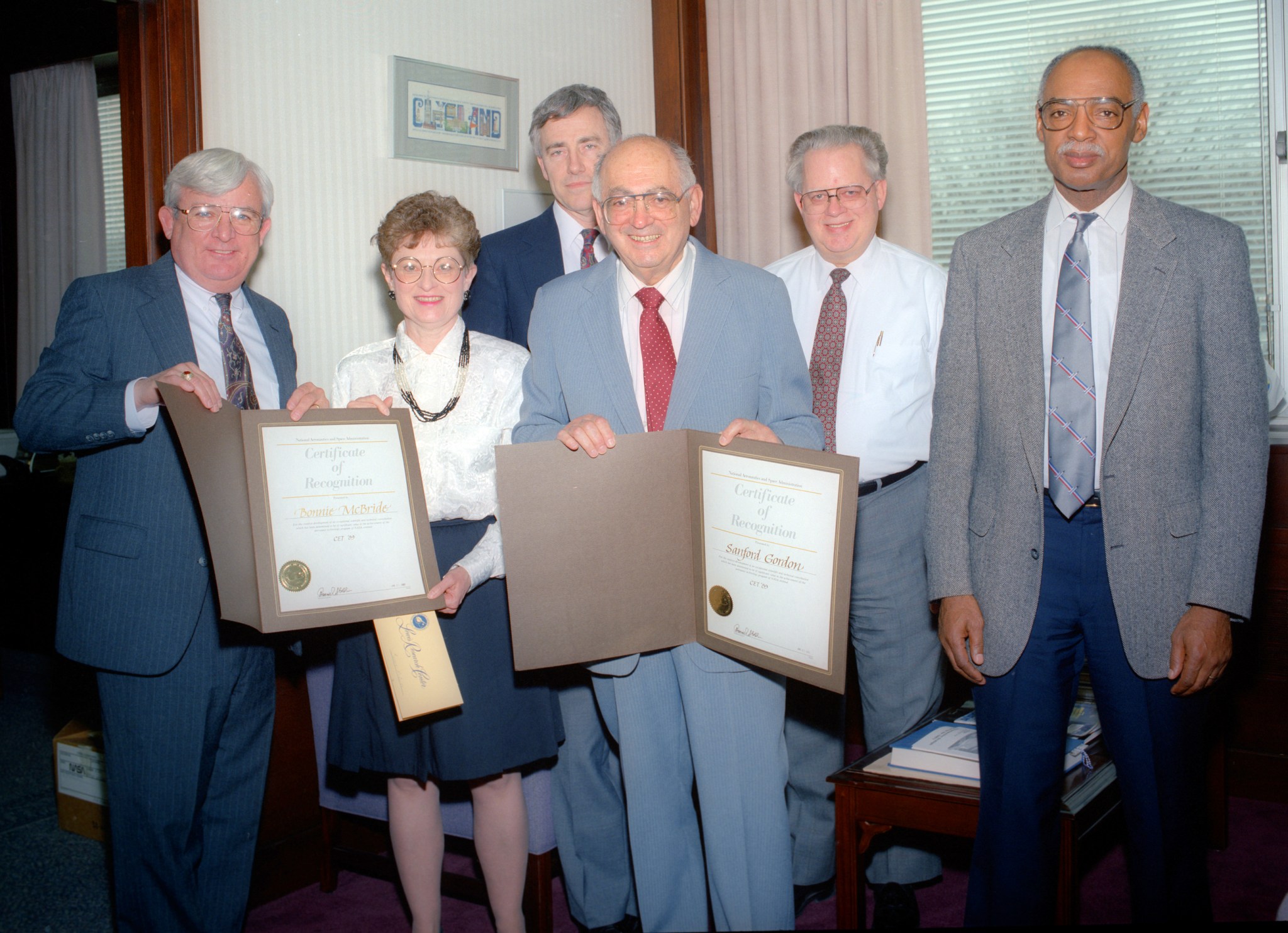Citation
Sanford Gordon and Bonnie McBride worked side by side to develop one of the most important and widely used computer programs in the aerospace industry, and they continued to improve the program for decades until their deaths. Now known as Chemical Equilibrium with Applications (CEA), the program is still used worldwide. Applications include assigned thermodynamic states, theoretical rocket performance, Chapman-Jouguet detonations, and shock-tube parameters for incident and reflected shocks. Gordon retired in 1985 and continued to work with our contract partners. McBride passed away in 2005 while still employed as a physicist in the Combustion Branch.
Biography
Sanford Gordon and Bonnie McBride were two center scientists who worked side by side to develop one of the most important and widely used computer programs in the aerospace industry. The duo wrote Computer Program for Calculation of Complex Chemical Equilibrium Compositions, Rocket Performance, Incident and Reflected Shocks, and Chapman-Jouguet Detonations in 1971 and continued for decades to make updates and improvements to the program. For over 45 years, the program and its upgraded versions have been used worldwide in designing and analyzing compressors, turbines, nozzles, engines, shock tubes, heat exchangers and chemical processing equipment. Now called Chemical Equilibrium with Applications (CEA), the program is still in wide use by the aerodynamics and thermodynamics community, with over 2000 copies in distribution. CEA calculates chemical equilibrium compositions and the properties of complex mixtures. Applications include assigned thermodynamic states, theoretical rocket performance, Chapman-Jouguet detonations, and shock-tube parameters for incident and reflected shocks. The program is associated with independent databases of the transport and thermodynamic properties of over 2000 individual species.
In 1993 McBride and Gordon were awarded a Space Act Monetary Award by NASA’s Inventions and Contributions Board for their Chemical Equilibrium and Transport Properties Code (CET89). The board identified it as one of NASA’s exceptional scientific and technical contributions for the 1990s. As with previous versions of the code, the program was used worldwide and had a wide range of applications—from Space Shuttle Main Engine design to testing nuclear propulsion concepts.
Sanford Gordon pioneered the application of computers for calculating thermodynamic properties and for using these properties to model the behavior of reacting systems. He began generating tables of thermodynamic functions and interpolation formulas for the NASA Glenn Research Center (then the NASA Lewis Research Center) in 1950. He worked with others like Vearl Huff, Virginia Morrel and Frank Zeleznik to improve the formulas.
Gordon and McBride continued to make updates to the chemical equilibrium and applications code, the thermodynamic databases, and associated codes until their deaths. Sanford Gordon died in 2001 after 37 years with NASA and several more with its contractors. Their work continues to make an impact around the world today as the center continues to host a website with the most recent version of the code for continued widespread use.
Related Documents
- Gordon Articles (1951-2001)
- Computer Program for Calculating Thermodynamic Functions (1992)
- Computer Program for Calculation of Complex Chemical Equilibriums vI (1994)
- Computer Program for Calculation of Complex Chemical Equilibriums vII (1994)
- Coefficients for Calculation Thermodynamic Properties (2002)
































